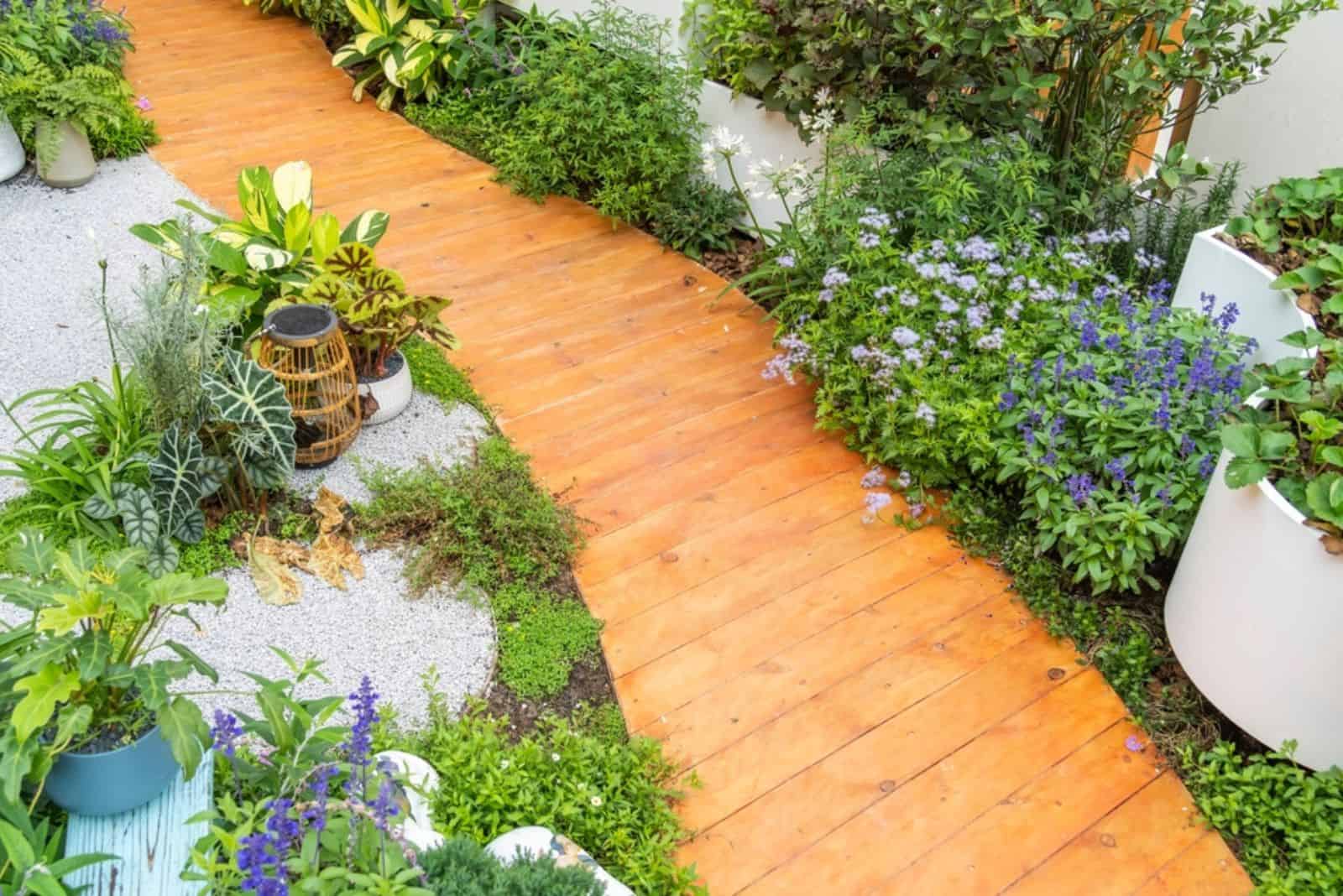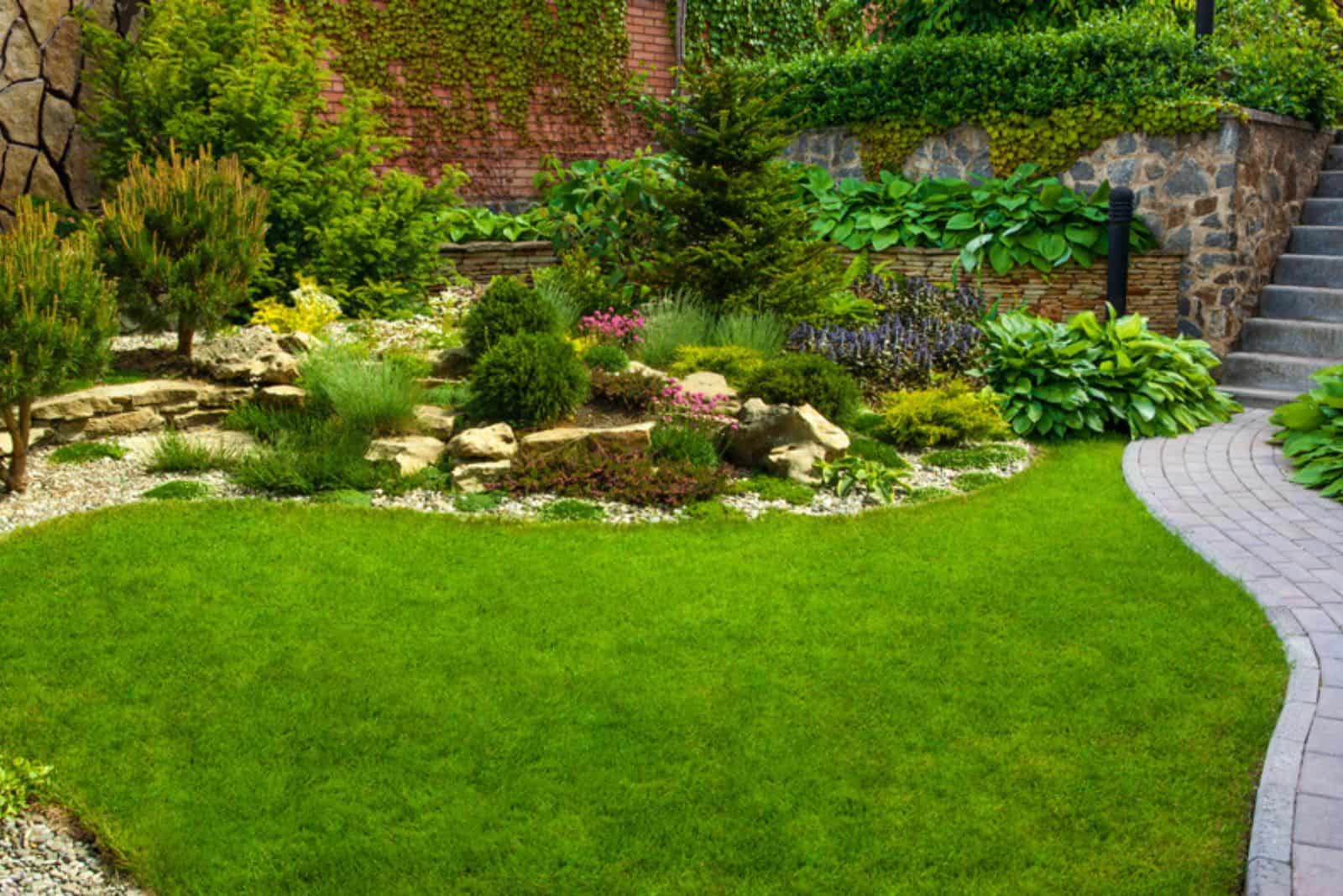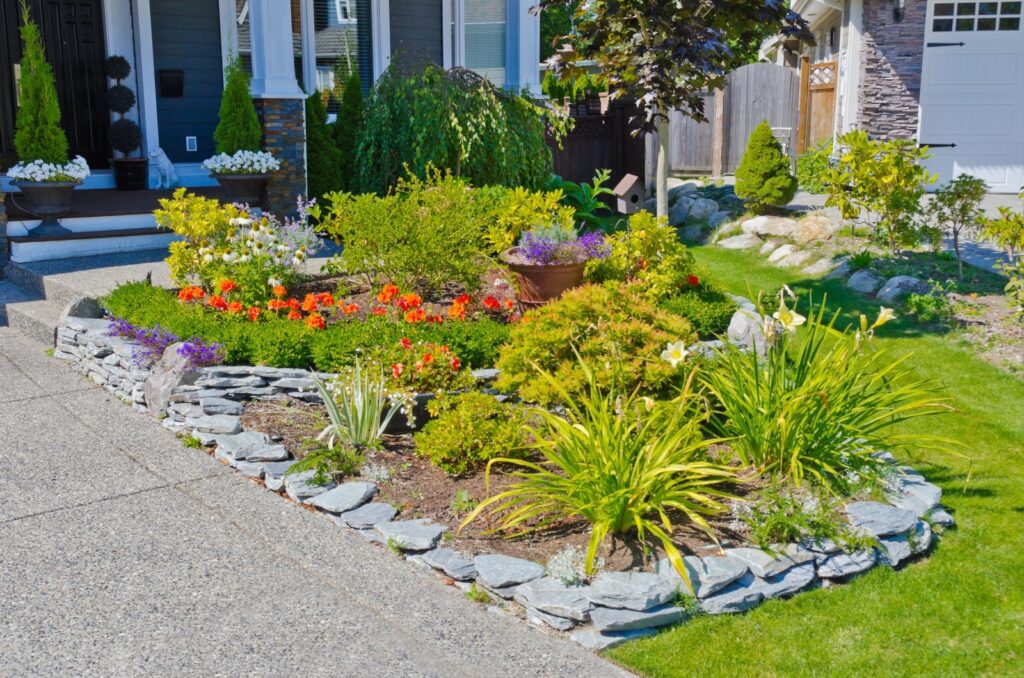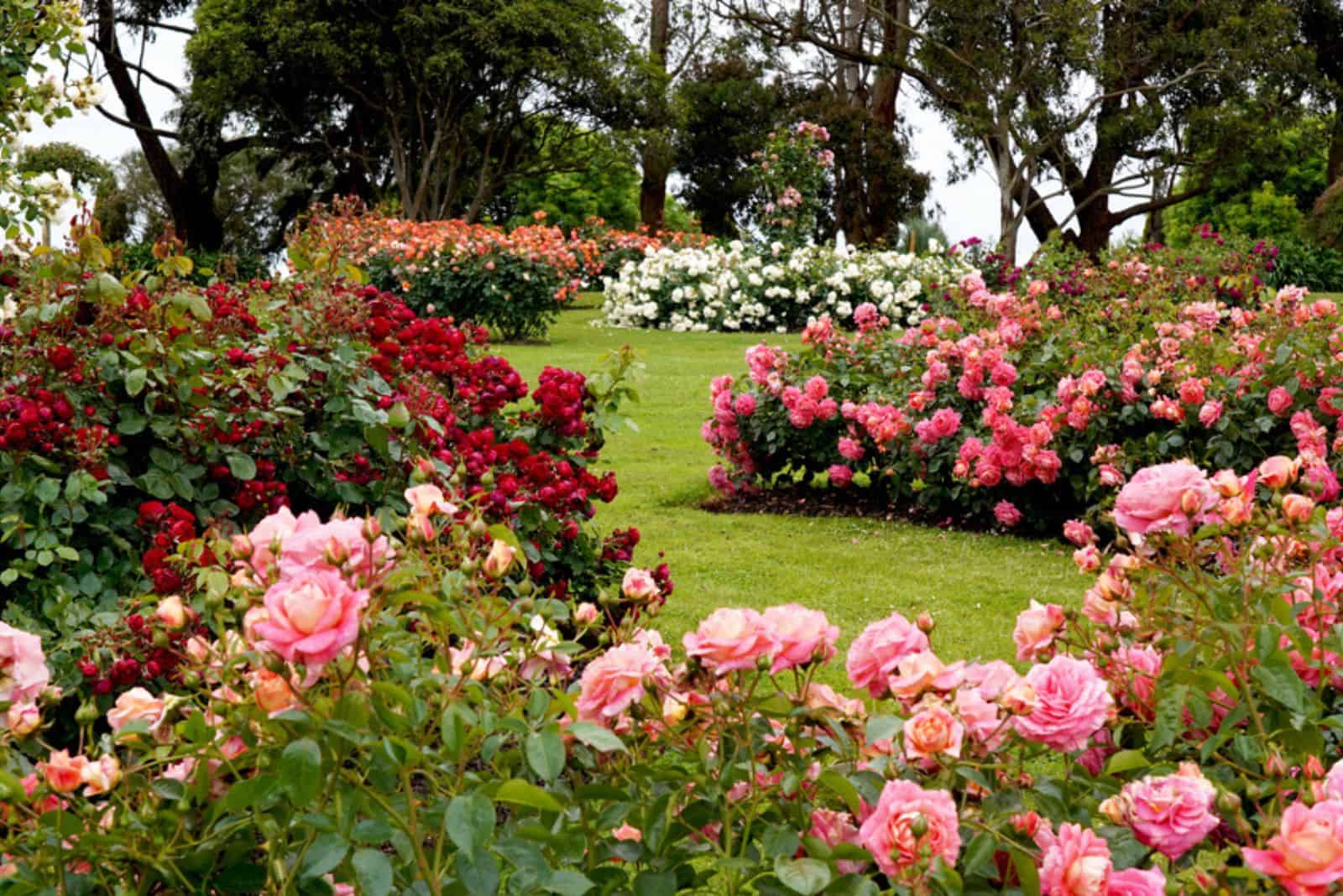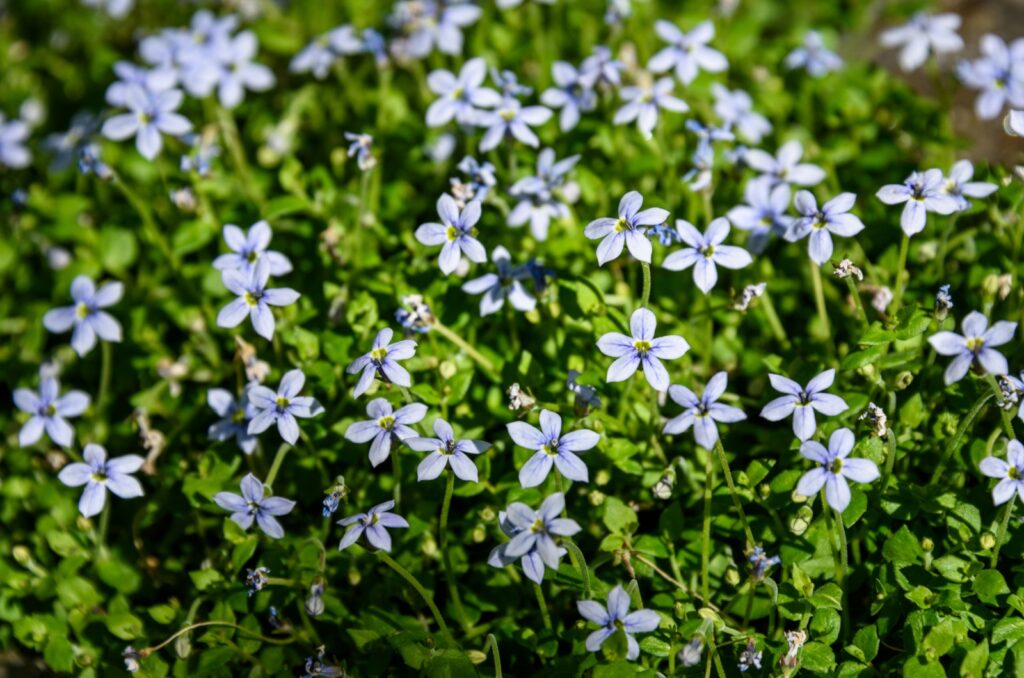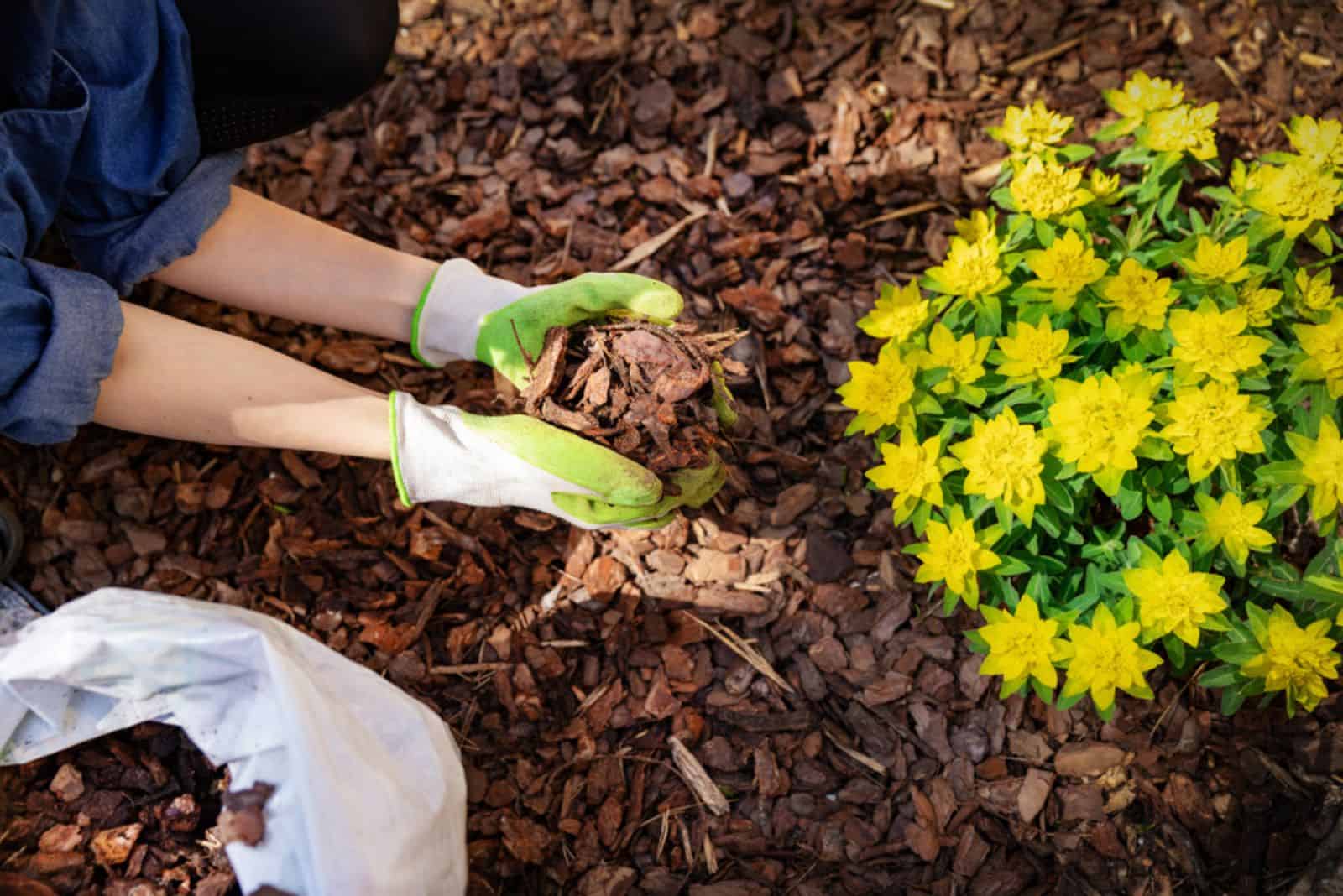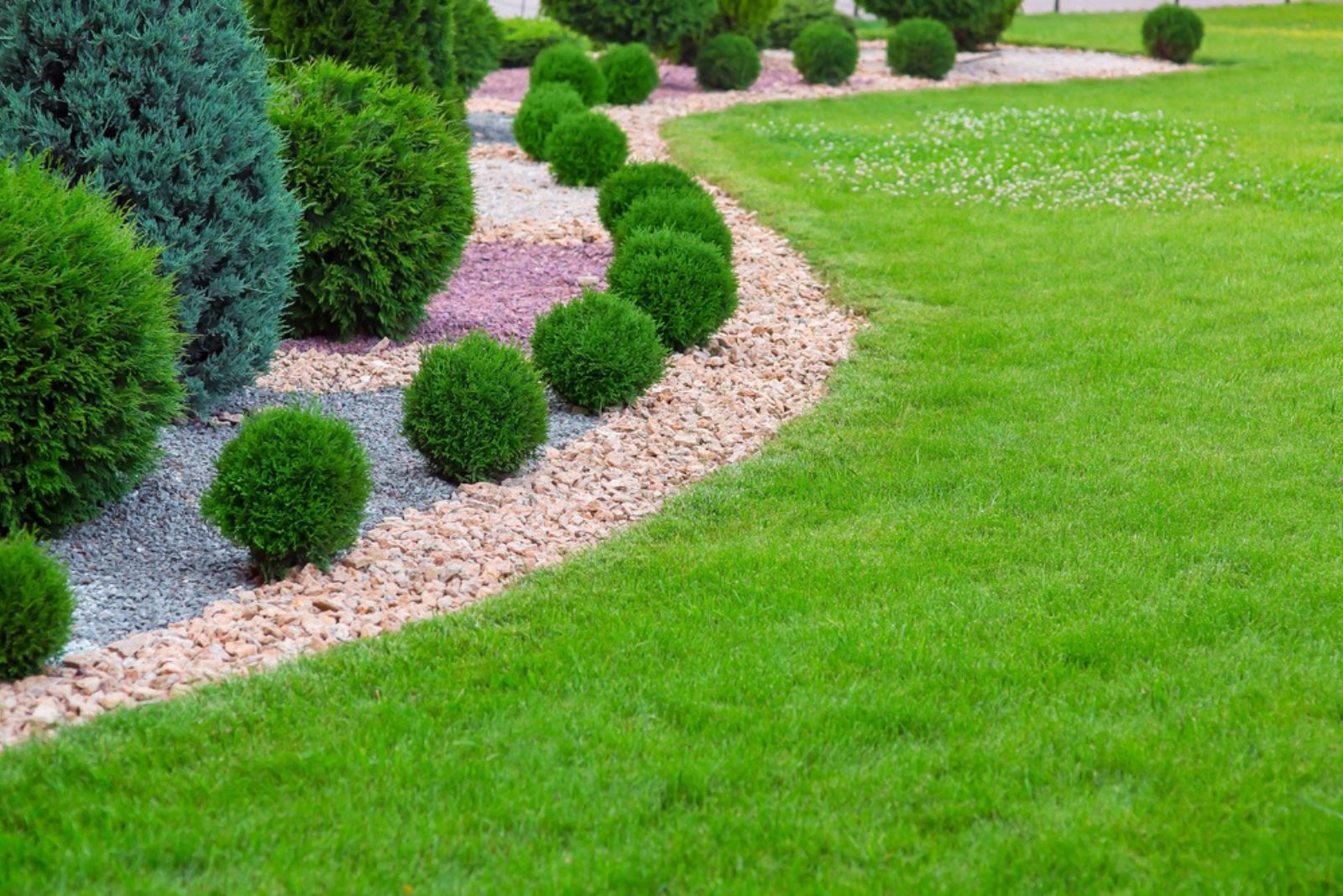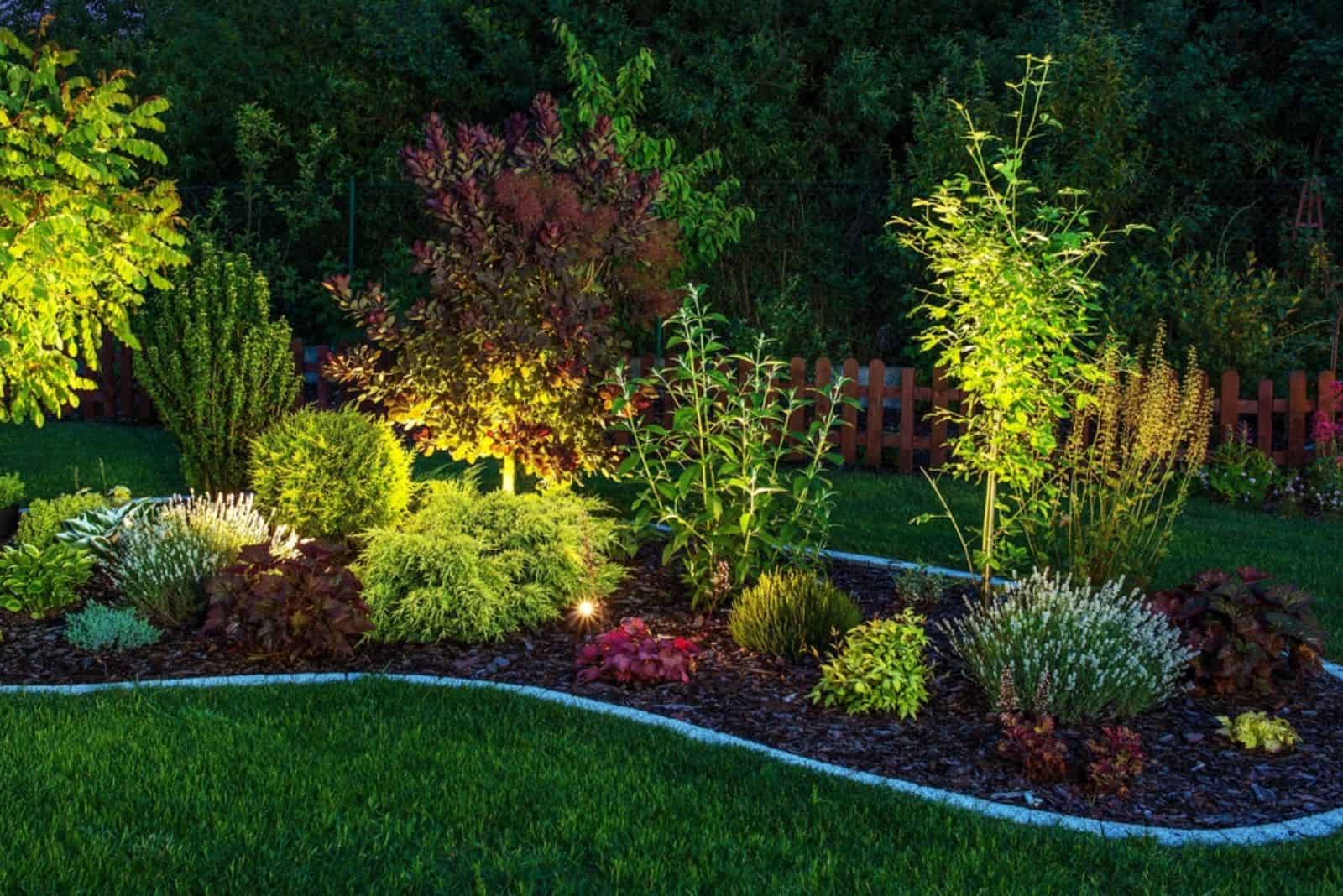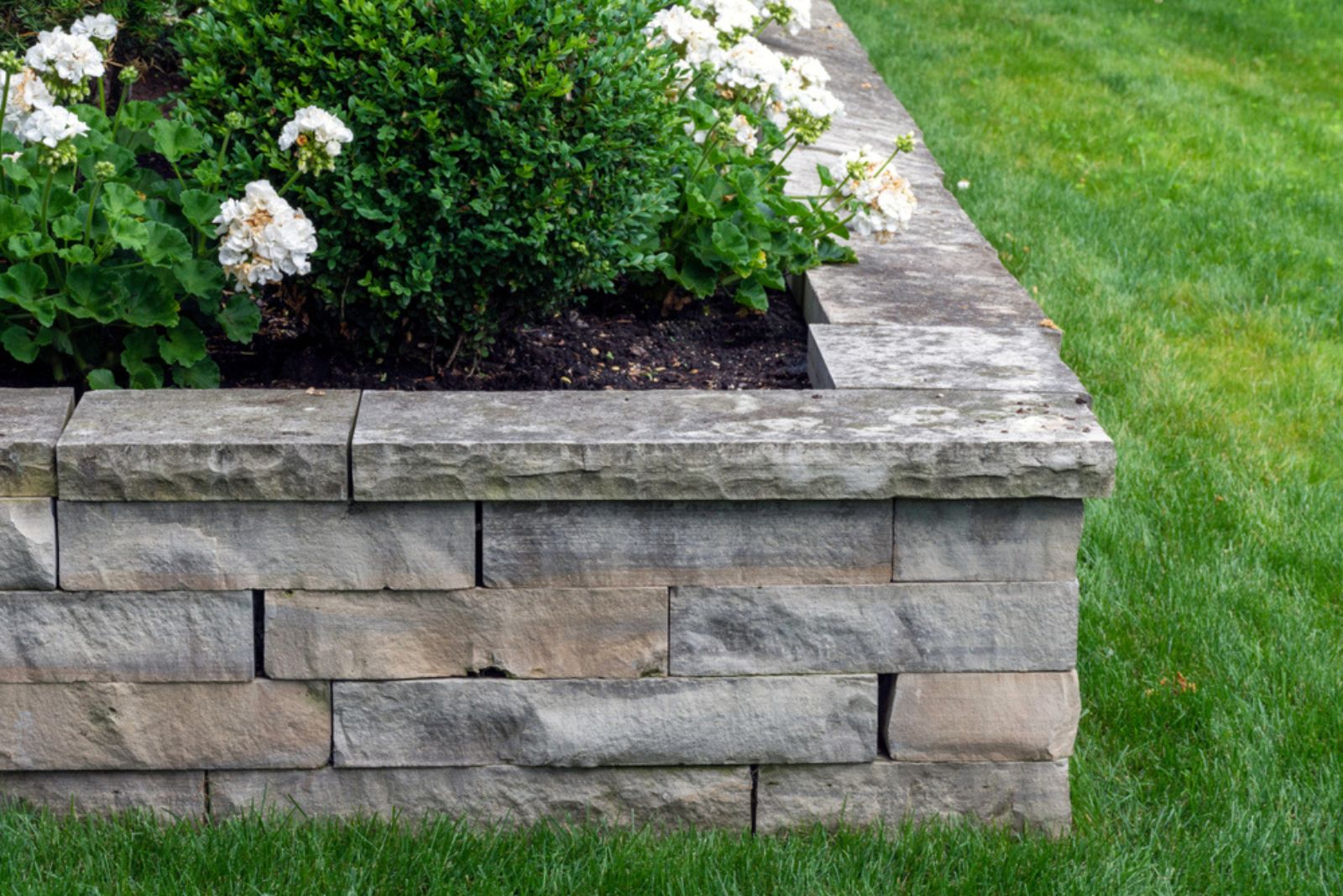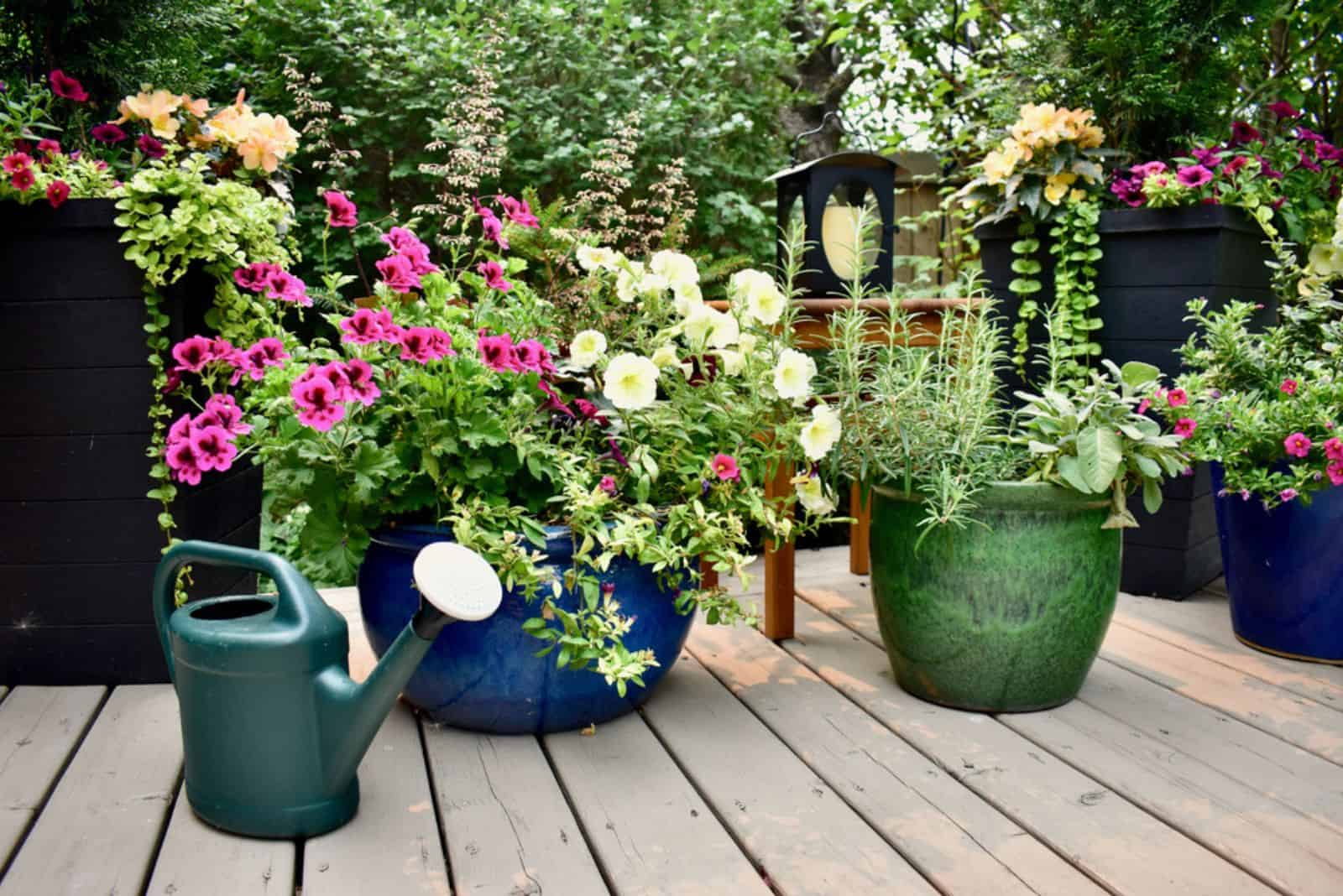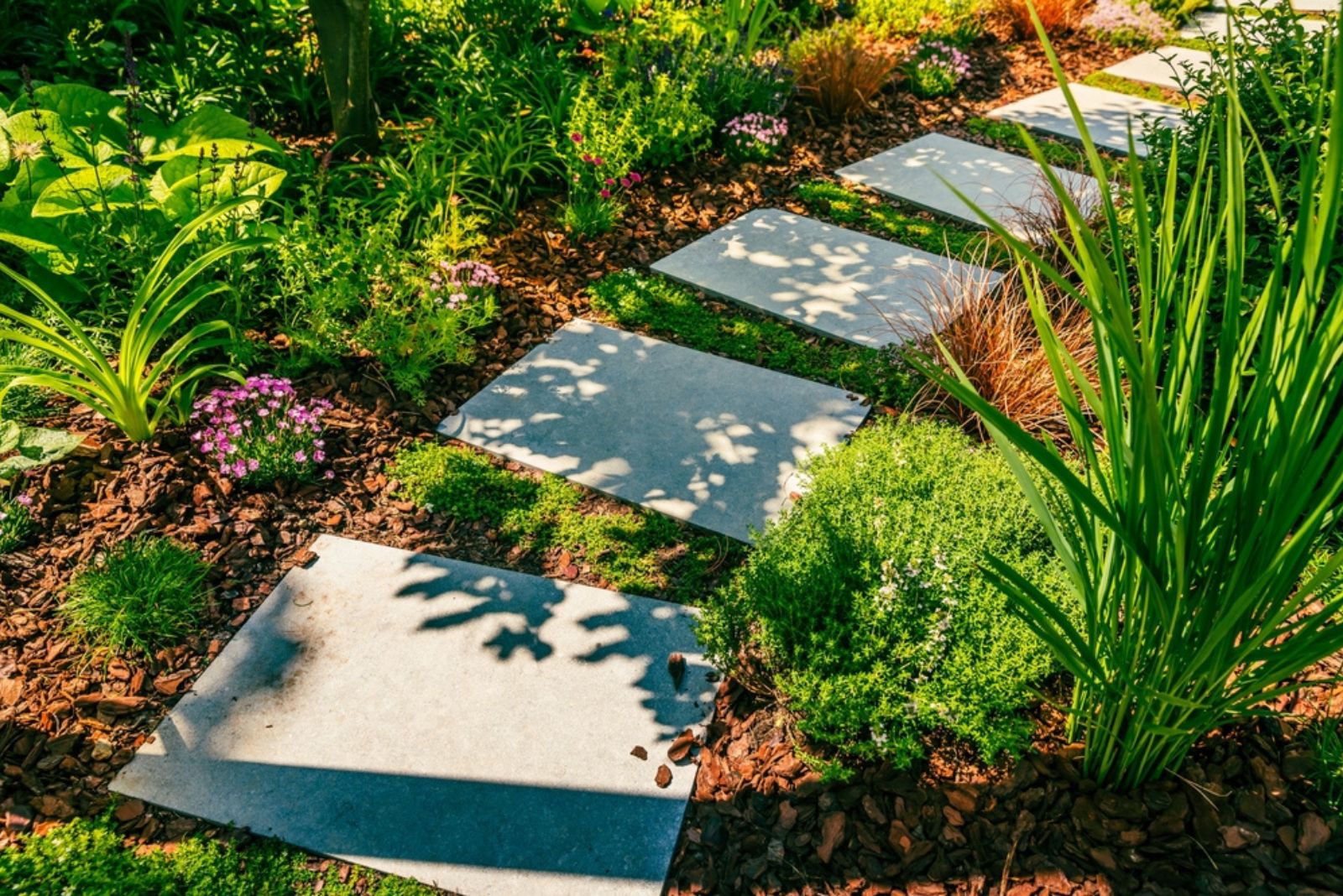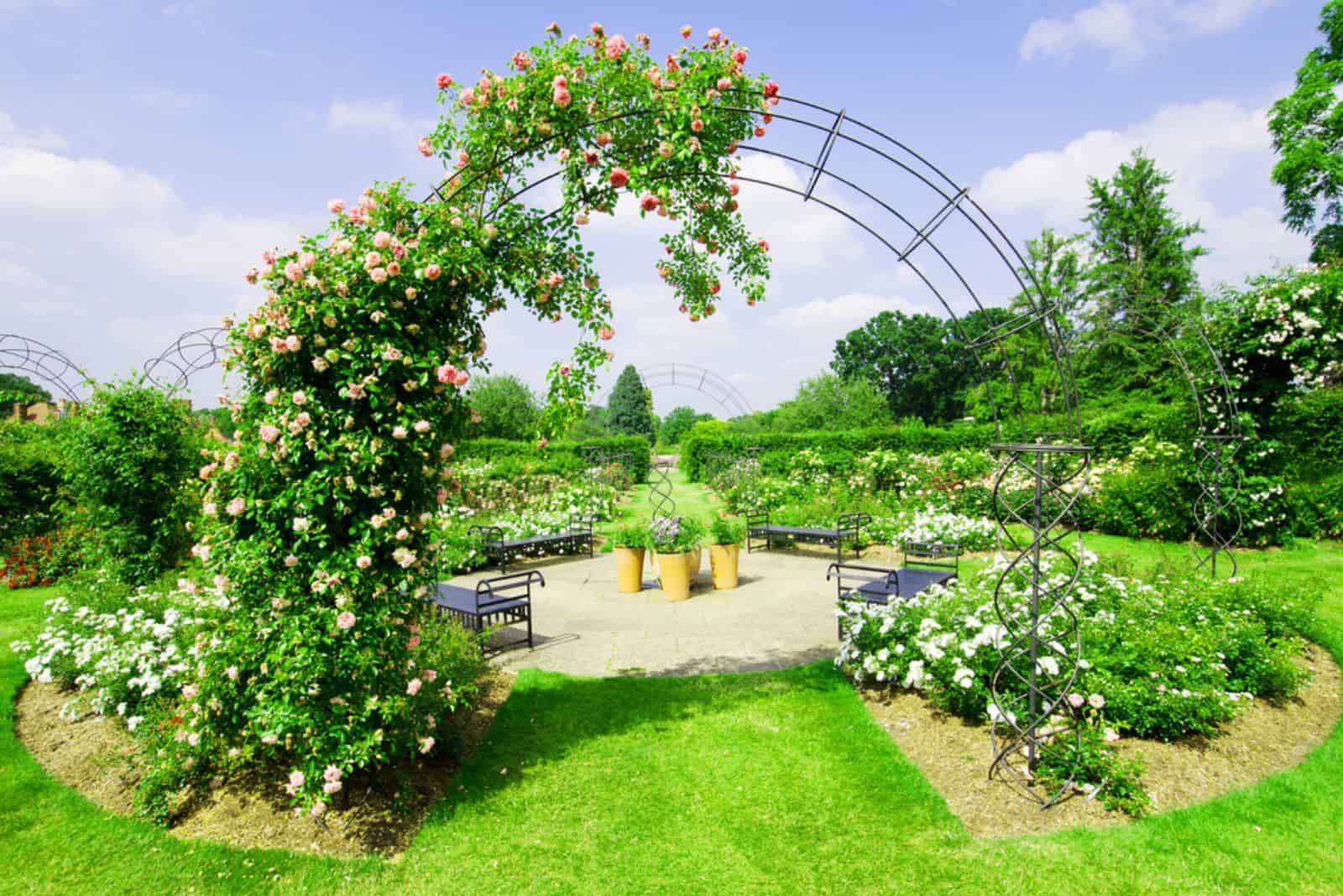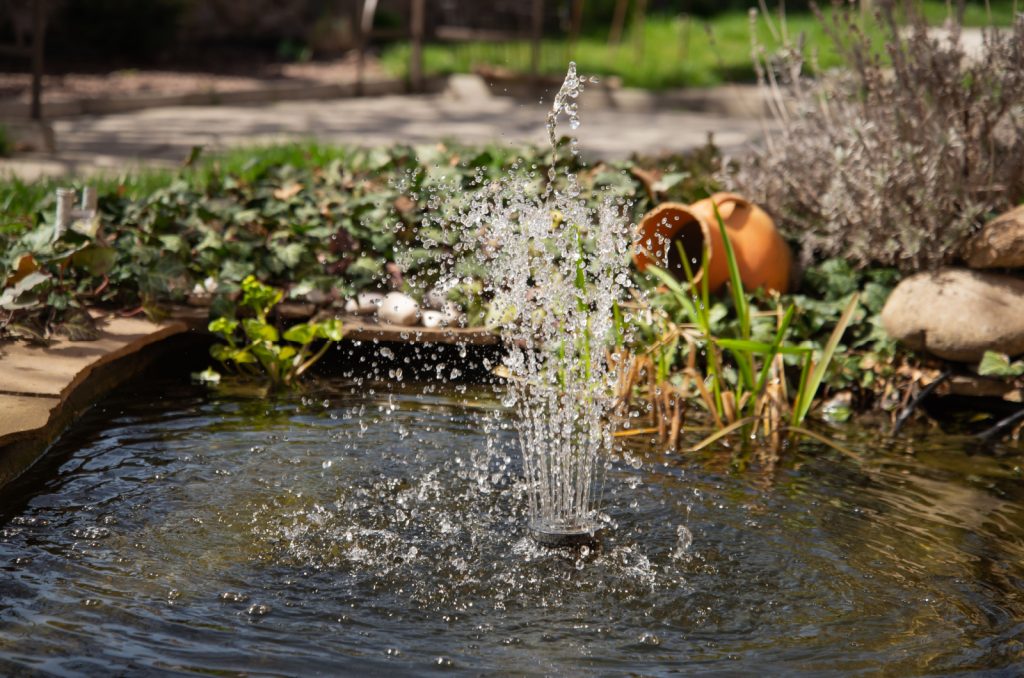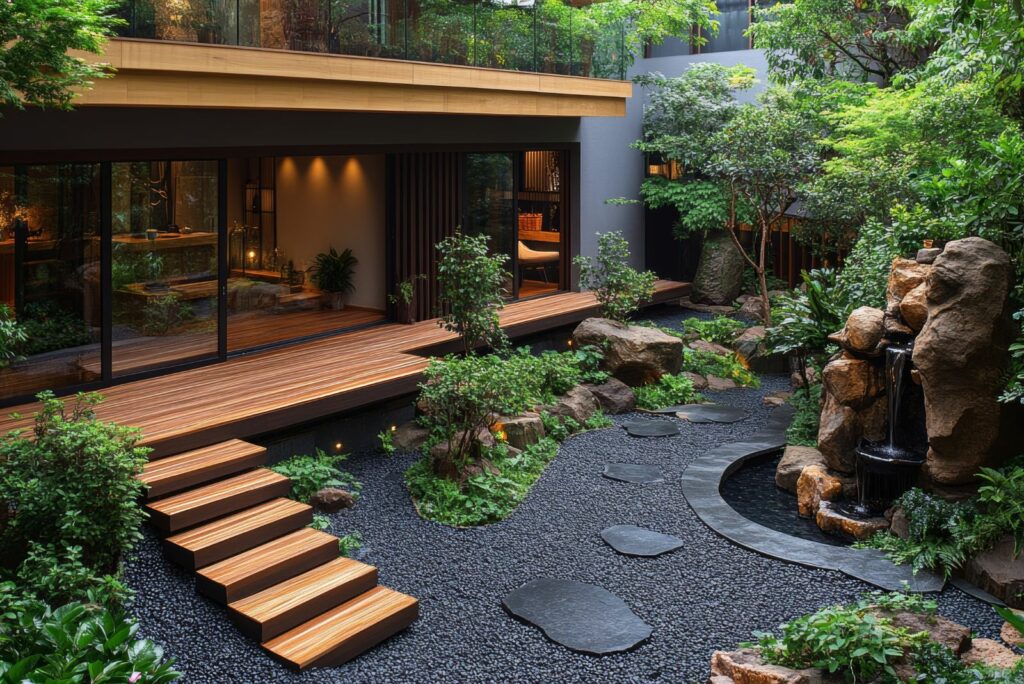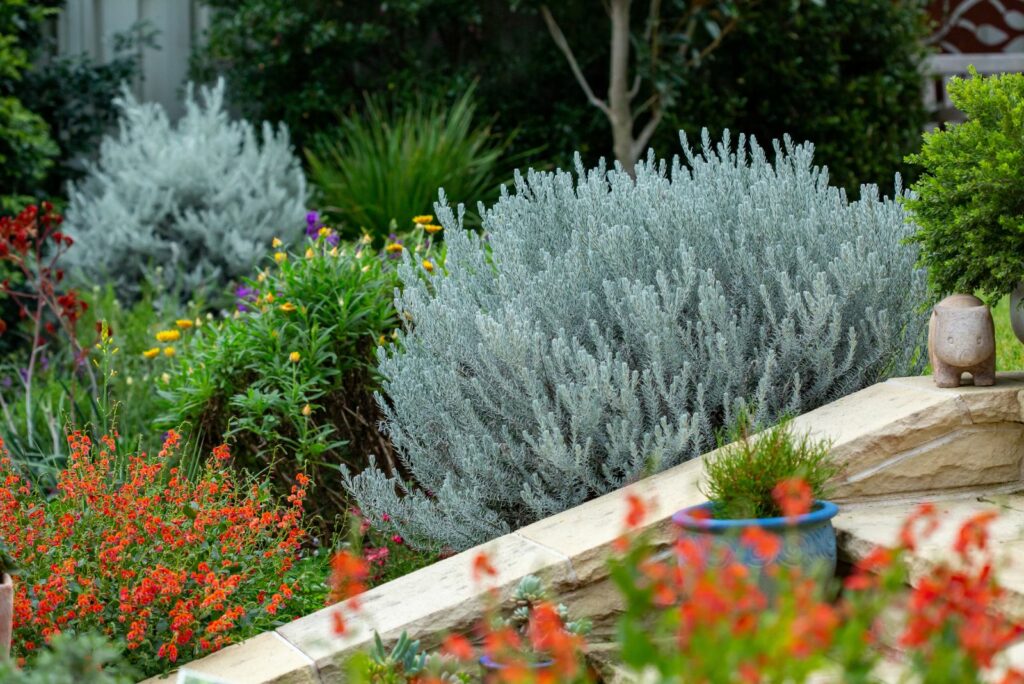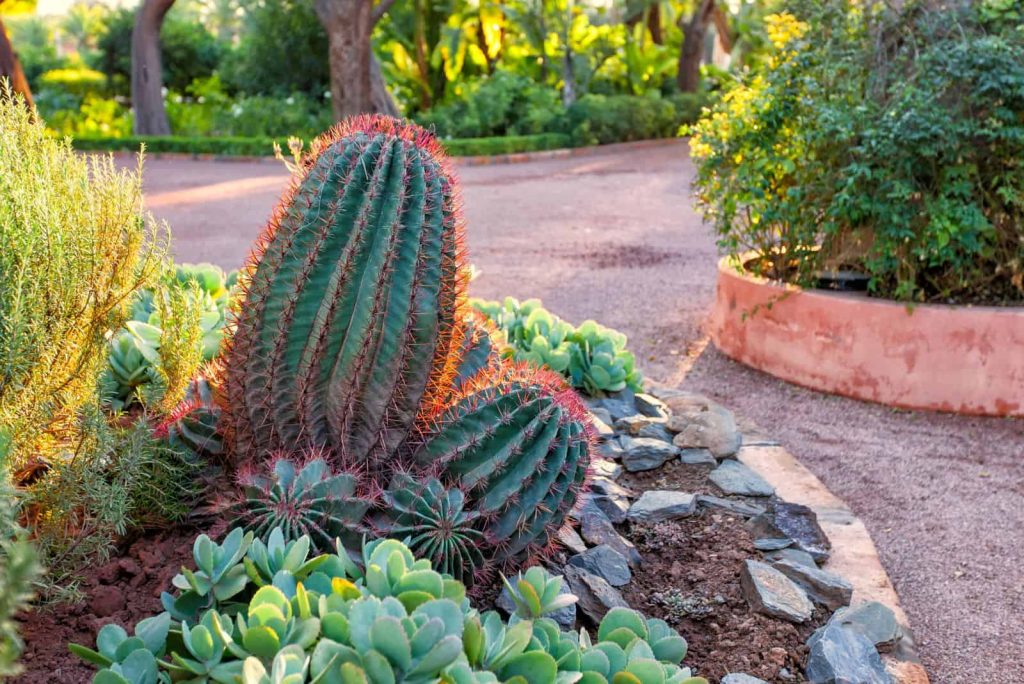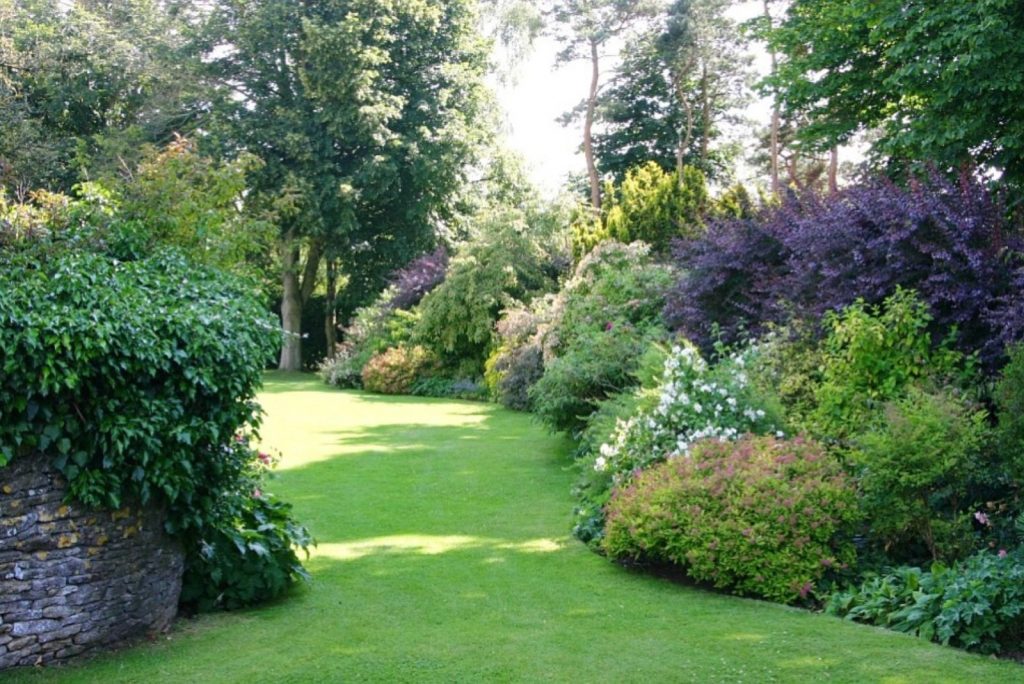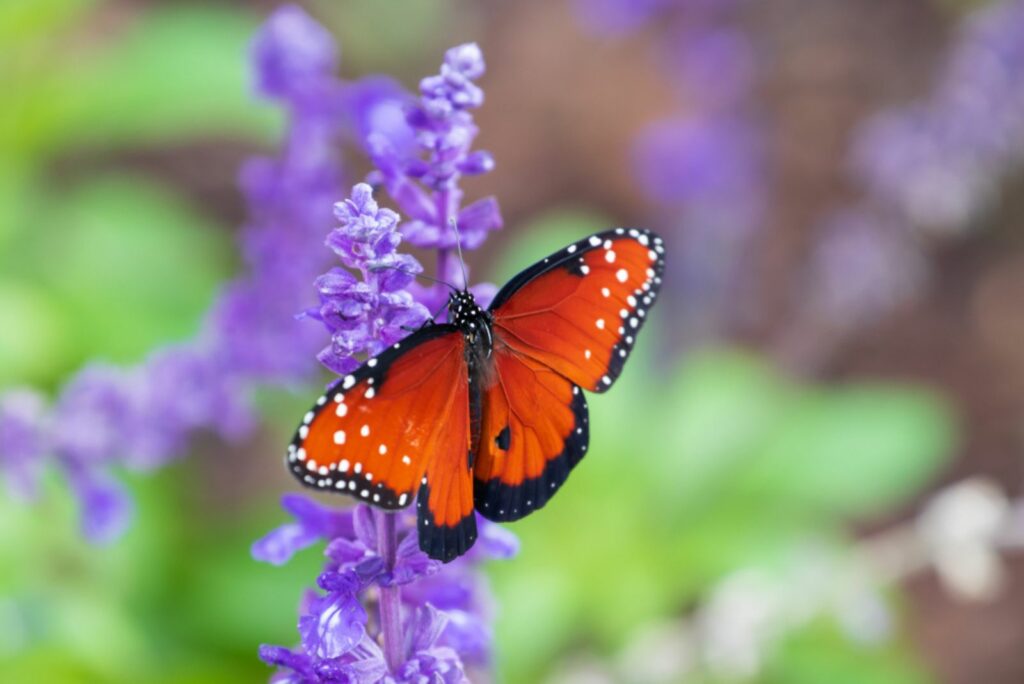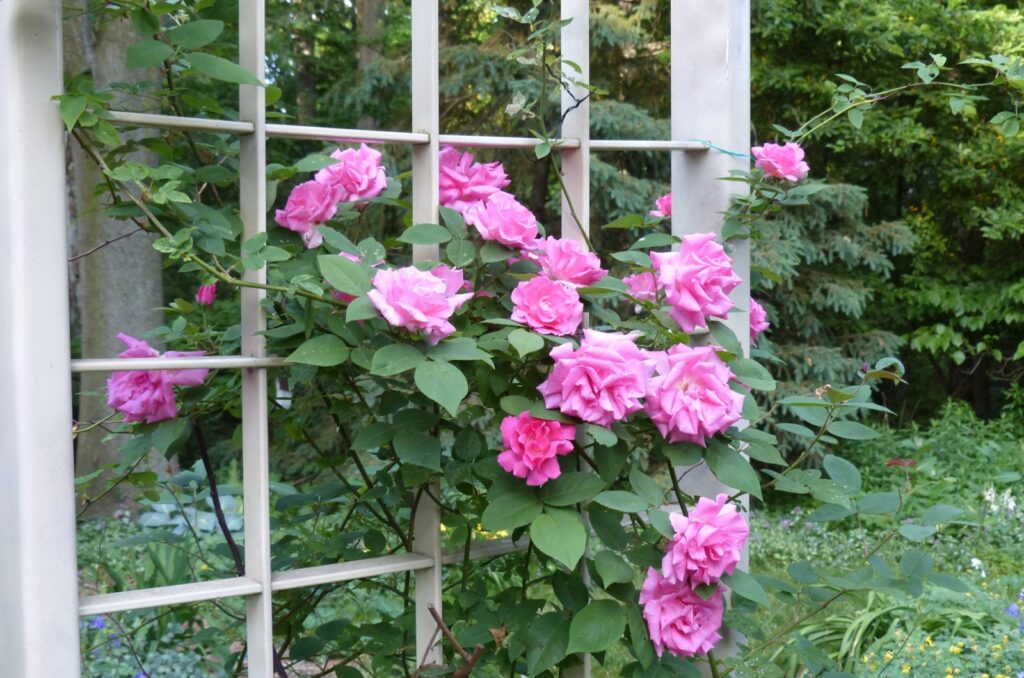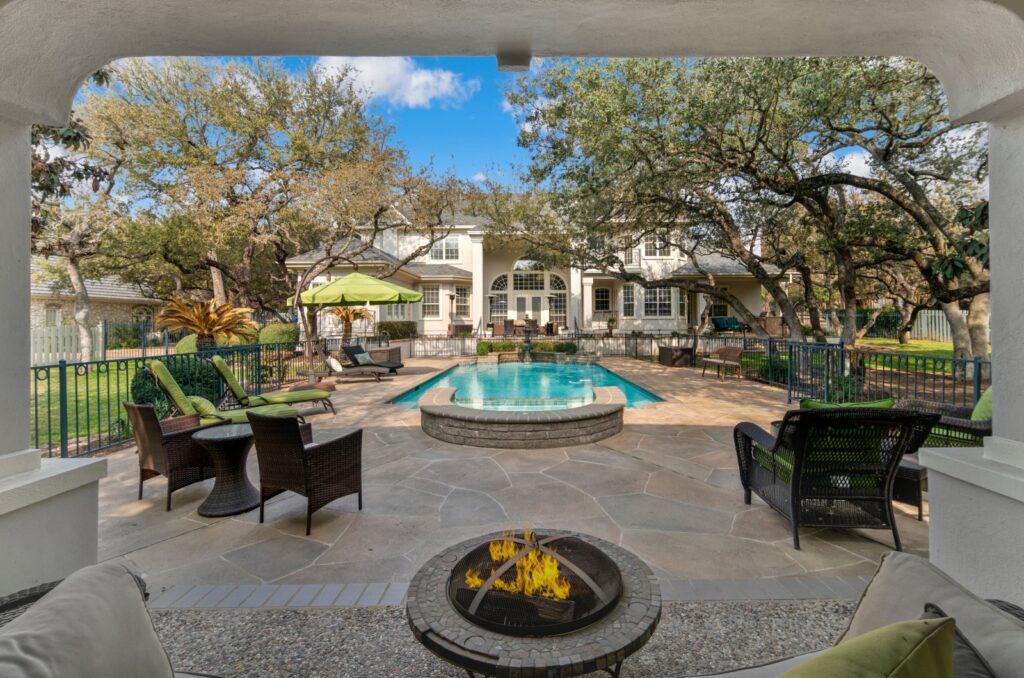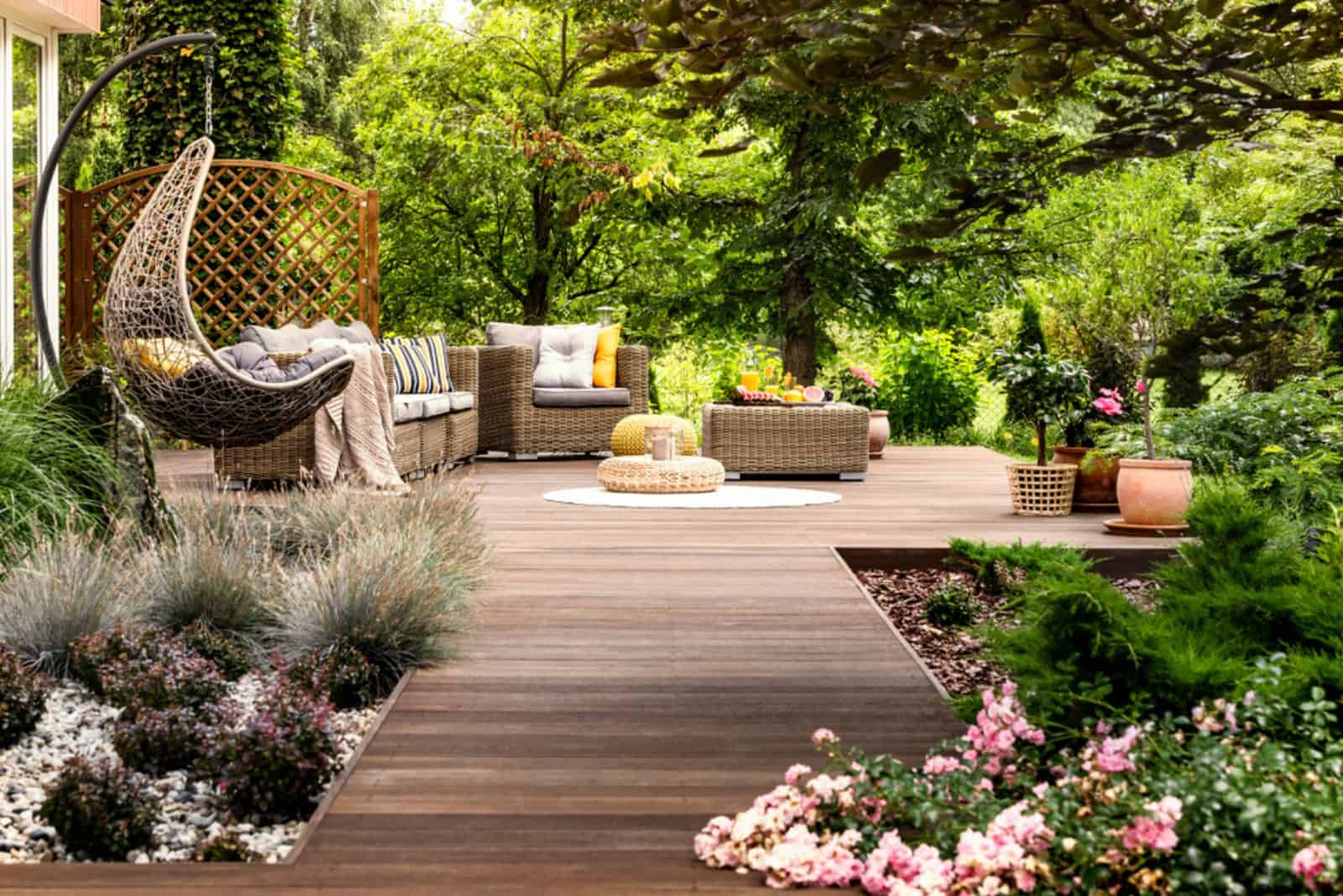Why hire professionals when you can transform your yard all by yourself?! Get yourself some gloves, put on a garden hat, and try out some of these easy DIY landscaping ideas.
I’ve made a list of popular choices you can try out, presented some famous designs, and included some tips and tricks to get you started.
Let’s dive right in!
Easy Landscape Ideas
Even the tiniest of changes can make a big difference to your landscape. Include some bold colors and textures, create contrasts, go with the flow, and above all, keep it usable.
And remember that DIY is all about simplicity, so don’t complicate it too much!
1. Play With Depth And Textures
Layering the elements and plants in the front, middle, and background of the garden isn’t difficult and has so much to offer. Use the principles of repetition, flow, proportions, and depth to create a balance.
Incorporate evergreen and deciduous shrubs and trees, perennials and annuals, ornamentals, herbs, etc. Just remember to use more smaller and less larger plants to keep everything in balance.
Flow – The best thing you can do for your landscape is create a feeling of wholeness. Ensuring that each section of your yard naturally flows into the other will create this big picture.
Depth – You can easily achieve this by incorporating wider flower beds and scaffolding larger plants behind the smaller ones.
Repetition – Growing similar flowers and ornamentals can tie the whole area together, bringing repetition and flow to it. What I love is planting different species with similar colors and characteristics.
Proportion – Don’t forget about the garden bed size! Think of the mature plant size, plan ahead, and combine larger trees or shrubs with smaller annuals.
2. Colors And Composition
Mixing colors and textures is related to the previous section, just in a different way. This technique will help you introduce layers into your landscape and create more depth.
But how can you bring bursts of color to your yard? Think perennials, annual tulips and hyacinths, wildflower plants, as well as shrubs such as lilacs and hydrangeas! To introduce more texture, don’t forget about ferns, ornamentals, and evergreen trees.
Now, what if I want a calmer garden, you may be wondering?
In that case, let the main focus be on textural evergreens and ornamental grasses, and add some plants with different variations of green and silvery shades. (Or even red!)
3. Include Perennial Ground Covers
Natural ground covers are every gardener’s dream because they don’t cause much fuss, help with erosion, hold weeds in check, reduce the need for mulching, and keep your yard looking lush as ever.
You can even use them instead of a lawn, especially in sloping or hard-to-mow locations. The general tip I have for you is to choose natives since they’ll attract birds, pollinators, and other beneficial wildlife without invading your entire landscape.
Here are a few popular choices:
Common wild ginger – This perennial loves moisture and shade, and forms a thick mat of heart shaped foliage. It spreads with rhizomes and adores a nutrient-rich, fast-draining medium.
Dwarf cinquefoil – Unlike the previous ground cover, this mat-forming perennial thrives in full sun (or at least partial shade) and less fertile substrates. It spreads quickly, but that’s just a plus when you see how many bees and bumblebees its golden blossoms attract!
Green-and-gold – This perennial is another plant with deep green foliage and bright yellow flowers. Simply plant it in partial sun and well-draining medium, and let it thrive. You’ll have to spread it every couple of years, but it’ll form a thick green and gold mat in an instant. An added bonus is that it repels deer.
Wild stonecrop – This succulent ground cover is perfect for rock gardens – imagine that! It creeps around and doesn’t mind the full sun, infertile soil, or drought. And as a bonus, it will produce tiny white stars come springtime.
4. Don’t Forget To Mulch
One of the easiest ways to improve the looks of your garden beds is to mulch them. You’ll also reap other amazing benefits, such as weed suppression and water and nutrient retention.
Some common materials for mulch for potted plants (that you can use in your outdoor garden as well), include compost, white gravel, wood chips, etc. You can get these in bulk to lower their cost, or just a bag or two if you have nowhere to store them.
P.S. Use mulching as an excuse to edge your beds with stone blocks, bricks, plastic edging, or any other material you like.
5. Sustainability Is The Key
Sustainable practices will support your ecosystem to the fullest, and they don’t go against beautiful landscapes.
The first thing that comes to everyone’s mind is to go chemical-free, so no synthetic fertilizers, pesticides, herbicides, etc.
Another thing you can do is save your water. One thing that can help you with this is planting rock garden plants since they’re usually drought-resistant.
Water the plants in the morning or install a drip irrigation system to deliver moisture directly to the plants’ roots at certain times of day.
Conserve rainwater in a barrel. This feature can blend into your landscape, especially if you choose a wooden one, and you’ll save even more water.
Another thing you should consider is planting natives. These species are already adapted to your environment, so you’ll most likely have to irrigate them less frequently than non-natives, and pest control will be easier.
They won’t invade your garden and suffocate your other plants, and will attract beneficial wildlife, pollinators, and pest predators. You can achieve this by transforming a space you don’t use into a wildflower meadow and prosper off useful insects.
6. Light It Up
A garden that lights up after dark will provide an inviting feeling and beautify the yard in a unique way.
Just don’t go overboard with them! Install string lights and connect the various trees, or include a couple of lamp posts around the most striking pieces of your landscape. And if you have ponds or fountains, you can always go with some underwater lights.
Indirect lighting will suit everyone’s tastes and provide a soft glow and lines along your pathways and patios. If you want a more natural look, then staggering the lights along the walkway is a great way to do it.
But don’t forget about sustainability! Solar lights are perfect for gardens that get plenty of sunlight, although you shouldn’t despair if your yard is more on the shady side. You can always get some LED lights to save energy.
7. Try Out Raised Beds
Raised beds are a perfect way to give your plants more drainage, use up all the space (even in small gardens), and seamlessly create different themes in your yard.
The great news is that you don’t have to worry about spending too much money on filling them. There are budget-friendly ways to fill raised beds, such as buying soil in bulk, using homemade compost, adding organic materials, etc.
If you want to incorporate one or two garden beds into your landscape, you can go with a rounded shape, which will be a real statement piece in your garden. Or you can simply use it to grow your herbs and veggies.
You can even move your vegetable gardens up front if you maintain them well. For instance, installing attractive trellises for vining plants, companion planting veggies with flowers, etc.
8. Style It Up With Planters
Combining large and small pots can provide much-needed depth if you have a small garden.
You can also decorate walkways and patios with large planters, or you can place them as guardians to your front door.
Just remember to stick to one theme. You can combine various sizes and group them together, but keep to a certain color palette, texture, or material.
I love grouping my pots in threes and filling them with graciously gravitating plants, branch and light decorations, vertical shrubs, and even horizontal ornamentals.
9. Upgrade Your Pathways
If your walkways are the thorn in your garden, you can always upgrade them. The great news is that you can do it yourself without a contractor.
The first thing that comes to my mind is using stepping stones. Place them on your lawn, level them with the surface, and you’ll have a beautiful pathway that’s easy to maintain.
And if you want even less work afterwards, plant a ground cover around the stones; you’ll have something to step on, and there’s no mowing required!
You can also use gravel or bark on their own or combined with stones and planks for a more powerful effect.
Just keep the overall aesthetic in mind! You can go with sharp and angular lines for a more serious look, or use flowing and soft lines for a more natural appearance.
Landscape Designs
If you want a specific landscape design to transform your yard, you’ll have to plan everything beforehand.
Some things you should consider include:
• How much light your garden gets
• What your native plants are
• General rainfall
• What sized space you’re working with
These things may limit what you can do, so you might not be able to achieve your desire to the fullest. However, you’ll definitely find some overlapping areas and still incorporate the parts you most like about a certain design.
And if you can’t decide which one you want, here are some examples.
10. Classic European Garden
Sharp and angular outline, geometric shapes, and meticulously trimmed shrubs define a formal European garden. This methodical design incorporates statement-piece fountains, benches, and skilfully planted flowers that provide bursts of color among all the greenery.
11. Japanese Zen Garden
There are many inexpensive zen garden ideas, and whilst we can’t incorporate them all, we can use many of them to create a peaceful and calming area.
Buddhist monks were the first to cultivate such gardens, and its signature design is minimalistic, containing a few chosen plants, sand, wood, and stone.
In today’s world, you’ll commonly find ponds and fountains with koi fish, serpentine walkways, and bridges decorating zen gardens.
12. English Cottage Garden
When we imagine an English cottage garden, we immediately think of a medley of vivid, closely arranged flowers crammed at the front of a house and slowly moving away from it. In this setting, you’ll commonly find neat lawns, ponds or other water features, and large canopies of shade trees.
13. American Southwest Garden
This design is perfect for drier climates, so you can include your favorite desert landscaping ideas. Think of all those drought-resistant perennials, sand, large boulders, smaller rocks, and even gravel decorating your yard.
Use succulents, cactuses, lavender, alpine plants, and other species to breathe some life and color into a rocky landscape.
14. Woodland Garden
As its name suggests, this design is perfect for more shady areas. It combines the height of trees with ground covering ferns, hostas, etc. The design seems less maintained, but provides a relaxing sensation.
15. Wildlife Garden
This style is all about attracting wildlife such as birds, pollinators, and other critters. You can easily transform your yard into a wildlife garden by planting native perennials, trees, and bushes.
It looks more natural and less maintained, almost wild, but you can spruce it up and keep it neat and tidy.
16. Create A Focal Point With A Garden Arch Or Trellis
A simple yet striking way to upgrade your landscape is by adding a garden arch or trellis. It instantly draws the eye, creating a natural focal point while adding height and depth to your space.
You don’t need to go overboard—installing a wooden or metal arch at your garden entrance, over a pathway, or as a backdrop for a seating area can completely transform your yard.
For added charm, grow climbing plants like clematis, wisteria, or jasmine over the structure. The trailing vines and seasonal blooms will make your space feel lush and inviting. If you want a more minimalist look, keep it simple with string lights or hanging planters.
17. Build A Cozy Fire Pit Corner
A fire pit is the ultimate way to create a cozy, inviting atmosphere in your yard. The best part? You can easily build one yourself with bricks, pavers, or even a metal fire bowl.
Choose a level spot in your yard and lay a solid base using gravel or sand. Then, stack bricks or pavers in a circular or square shape, leaving enough room for airflow. If you want a more rustic look, use large stones to build the structure.
Surround your fire pit with comfy seating—think Adirondack chairs, tree stumps, or even built-in benches. To enhance the ambiance, line the area with string lights, lanterns, or glow-in-the-dark pebbles.
Tips For Choosing Materials
Choosing a suitable material can make or break your landscape. Keep your style in mind and go from there when building raised beds, water features, pathways, etc.
Wooden materials give off a rustic and more natural feel, but you’ll have to change them every couple of years since they’re prone to weather damage.
Stone elements last much longer and also seem natural, but can feel a bit cold in certain settings. If you want a more modern look, go with cement and pavers, and for a formal aesthetic, choose bricks.
(Although, bricks can also offer a rustic and boho vibe!)
Prioritize!
When making something from scratch, even if it includes easy DIY landscaping ideas, the best advice I can give you is to prioritize. First think of how you’ll use that space, whether it’s for games, relaxation, or entertainment.
Then go from there and think about your climate and maintenance needs – you might need more erosion control, drought-tolerant plants, or drainage.
For instance, if the water tends to pool in the middle of your lawn, think of digging up a small pond. Or if your soil is too dry, infertile, and rocky, go with an American Southwest garden style and incorporate more sandy materials and drought-resistant plants.
I hope these ideas and styles have helped direct your thoughts so you can tackle those projects you’ve been putting off.
Until next time!

